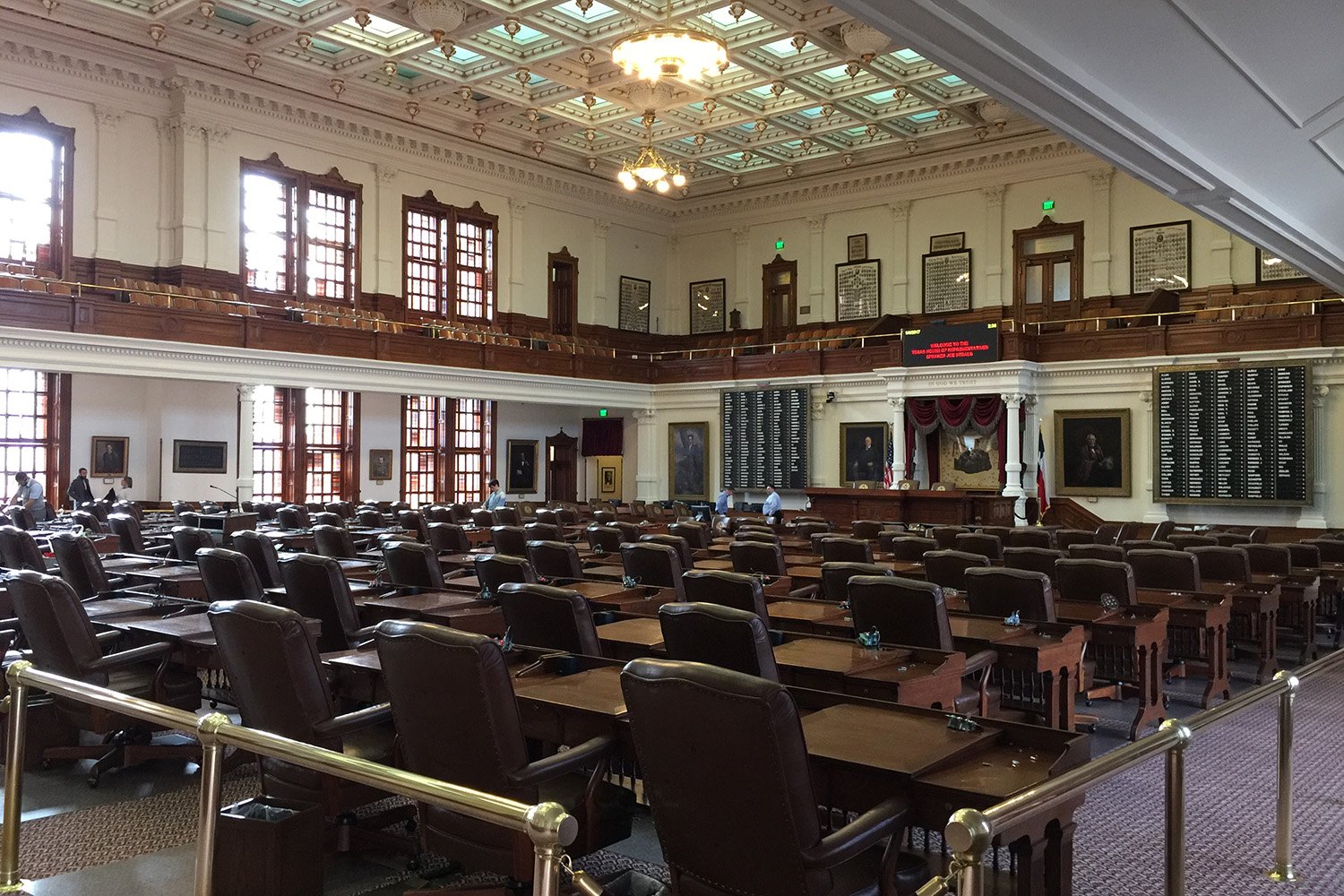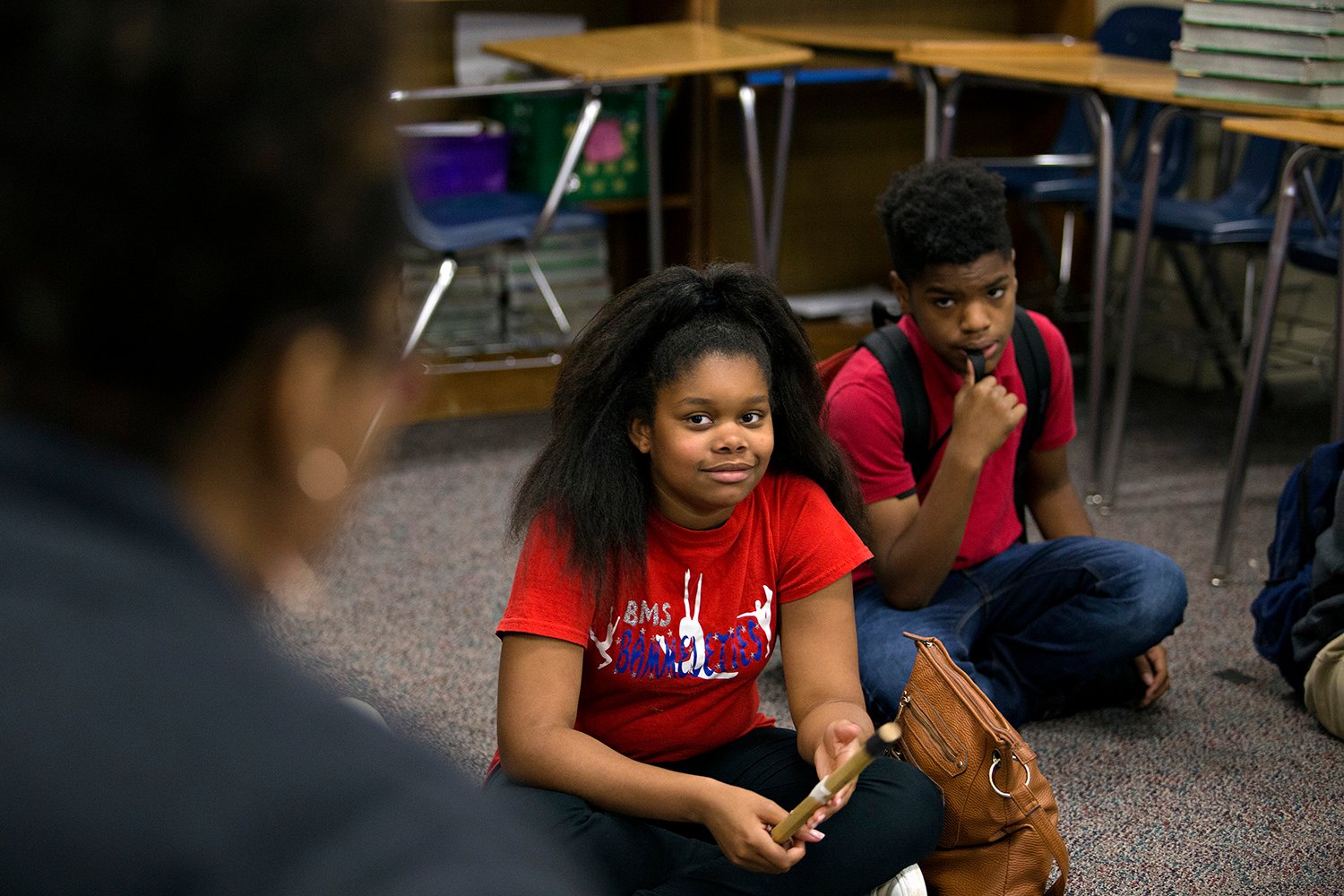
The plan includes new gun laws, training for school officials and an app.
May 30, 2018 6 PM Central
Gov. Greg Abbott’s suggestions for limiting mass shooting deaths in Texas include a bevy of changes to state law, a culture shift in how law enforcement officers patrol their communities, increases in mental health practices at schools and help for educators who want to improve their abilities to remove potentially dangerous students from classrooms.
Here’s what you need to know about the 40-page “School and Firearm Safety Action Plan” that Abbott released in Dallas on Wednesday.
While Abbott’s plan doesn’t call for any new state statutes that directly limit who can buy guns, it does aim to close some loopholes in laws that already bar some people from purchasing or owning firearms. And it does call for lawmakers to strengthen existing criminal penalties for some people whose guns are used to injure or kill people.
“I can assure you I will never allow Second Amendment rights to be infringed, but I will always promote responsible gun ownership,” Abbott said Wednesday.
The governor wants courts to report felony convictions, mental health adjudications and protective orders that can block people from buying guns within 48 hours instead of 30 days.
In Texas, parents can be criminally prosecuted if they don’t safely store loaded guns that end up being used in certain crimes by children who are 16 years old and younger. Abbott wants to include 17-year-olds in that law, remove the provision that only allows for prosecution if the guns were loaded when children accessed them and increase the criminal penalty from a Class A misdemeanor to a third degree felony. The plan also calls for requiring gun owners to report when their firearms are lost or stolen.
The plan mentions a potential “red flag” law that would allow judges to temporarily take guns away from people deemed to be dangerous if there is legal due process. Abbott didn’t call for legislators to pass such a law — he instead wants to “encourage” lawmakers to “consider the merits” of adopting it. Outgoing House Speaker Joe Straus took him up on that late Wednesday and instructed a committee of the lower chamber to study such legal provisions.
"In the coming days, I will issue other interim charges designed to help prevent another school shooting," Straus said in a prepared statement.
Abbott’s proposal also calls for encouraging voluntary use of gun locks. It mentions that Ohio requires dealers to also sell access prevention devices and that Maine requires dealers to demonstrate how to use trigger lock devices. The plan says “Texas could emulate these laws,” but does not list them as an explicit recommendation for lawmakers.
The safety action plan says that schools and local law enforcement agencies should work closer together to increase how often officers are at schools. That includes making campuses regular stops on officers’ patrols and giving them rooms inside schools to stop and file reports while on duty.
Abbott also wants to increase the number of school marshals legally allowed at each campus, streamline the 80-hour training course required to become a marshal and repeal the legal requirement that marshals safely store their firearms. And he’d like to see schools prioritize the hiring of retired police officers and military veterans as resource officers.

A litany of the recommendations would require legislative action. But that may not begin until the next regular legislative session begins in January.
Abbott hasn’t ruled out calling a special session before then. But he attached a key caveat that didn’t apply to last year’s special session: Lawmakers must reach consensus on what bills they plan to pass before he’ll convene them in Austin.
“A special session is not a debating society,” he said Wednesday.
Several school officials could spend the summer being trained in ways that Abbott hopes will prevent more deaths. The state is paying to train campus staffers who want to become school marshals. Educators and other school officials can also participate in free training for responding to active shooters, a workshop for emergency planning and courses on how to teach emergency incident response to others.
Two state agencies are also increasing the amount of mental health first aid training they provide this summer. And the Texas School Safety Center is partnering with SIGMA Threat Management Associates to train staffers on behavioral threat assessment, a technique used to identify potentially dangerous students and determine the best ways to intervene before they become violent.

Abbott wants teachers to have the power to immediately place students in alternative classrooms if they threaten violence. He also wants lawmakers to expand the criminal offenses that allow school officials to expel or put a student in disciplinary classrooms. Current felonies that can prompt removal from regular classrooms include murder, kidnapping, sexual offenses, assaults and aggravated robbery. Abbott wants that list to include stalking, cruelty to animals, any weapons-related felony and any organized crime offense.
But when students are placed in alternative classrooms, Abbott’s plan recommends that officials use what’s called restorative practices to identify underlying mental health issues that influence behavior. Some Texas schools are already using similar practices, which encourage students and teachers to talk through problems and build stronger bonds to prevent conflict and violence.
A key tenet of the proposal relies on expanding use of behavioral health programs and increasing the number of mental health professionals at schools.
Abbott wants his office and lawmakers to identify $20 million in state funds to begin expanding a mental health screening program operated through the Texas Tech University Health Sciences Center. One major change proposed would create two classes of school counselors — one that focuses on academic issues like college acceptance and one that concentrates on students’ mental health.
“This plan puts the state on a pathway to ensure healthier families, safer schools and safer communities,” Abbott said Wednesday.
The Texas Department of Public Safety next month will launch an app called “iWatch Texas,” which allows Texans to report suspicious behavior or criminal activity statewide. The safety plan recommends increasing awareness of the app among teachers and students.
“Using a single, statewide reporting system, as opposed to a school-specific system, ensures that tips from different parts of the community are all integrated linking critical data,” the plan says.
Reported information is then supposed to be disseminated to relevant law enforcement agencies.
“For example, a student may report strange behavior and statements made by another student,” the report says. “Later that day, a citizen reports that the same student was attempting to purchase ammunition at a sporting goods store and became belligerent when refused. The iWatch system would link these separate incidents, and all future reports involving this student on or off campus would be monitored by law enforcement.”
Abbott’s plan also suggests linking that data to a proposed increase in existing social media monitoring programs.
“Several recent perpetrators of mass shootings had left clues as to their potential homicidal or suicidal intent on publicly accessible social media sites in the months before committing their crimes,” the plan says.
The safety action plan doesn’t detail how much it would cost to implement all of the suggestions. Some may not come to fruition. The price tag for others may depend on how many school districts buy in to voluntary proposals.
The plan says the state already has access to $70 million for some of the recommendations and that the Texas Education Agency is working with school districts on how to prioritize $62.1 million in federal funds for several of the suggestions. State agencies are also seeking federal funding for mental health first aid training.
The plan notes that “additional funds” could be “offered by the Legislature.” But when the legislature convenes for the 2019 regular session, lawmakers will be about $7.9 billion short of what they need to fund current programs, services and policies, according to a recent report. And in Texas, lawmakers are already largely criticized for decreasing the amount of state spending per student in recent years.
Disclosure: Texas Tech University has been a financial supporter of The Texas Tribune, a nonprofit, nonpartisan news organization that is funded in part by donations from members, foundations and corporate sponsors. Financial supporters play no role in the Tribune's journalism. Find a complete list of them here.
You are one of our most dedicated readers, and we need your support during our Fall Member Drive. Will you take your dedication to the next level? Make a donation to The Texas Tribune to support the in-depth, independent journalism you trust.